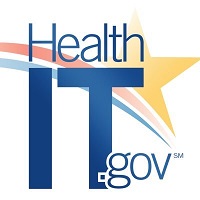 By Kevin Chaney, MGS, Teresa Zayas Cabán, PhD, Courtney C. Rogers, MPH, Joshua C. Denny MD, MS and Jon White, ONC
By Kevin Chaney, MGS, Teresa Zayas Cabán, PhD, Courtney C. Rogers, MPH, Joshua C. Denny MD, MS and Jon White, ONC
Twitter: @ONC_HealthIT
Precision medicine creates treatment and prevention strategies that meet patient needs by considering individual variability in their genome, environment, and lifestyle. While precision medicine can revolutionize health care, it requires access to an unprecedented volume and variety of data, and an infrastructure that rapidly brings new discoveries to bear. Recently, we published an article in the Journal of the American Medical Informatics Association that describes health IT’s vital role in precision medicine based on key insights from a series of ONC projects supporting the Precision Medicine Initiative.
Four key health IT needs for precision medicine are:
- Determining requirements for data
- Building robust infrastructure
- Integrating precision medicine into clinical care
- Developing relevant policies
Data Requirements
Electronic health data are widely available thanks to the prevalence of health IT, but not all data are standardized or include the metadata needed for precision medicine. To increase the availability of rich data sets, ONC’s projects developed methodologies for collecting and exchanging diverse data types using standardized APIs.
These projects also highlighted data quality issues such as accuracy, consistency, completeness, and usefulness. In particular, these projects highlighted a trade–off between richness of data and simplicity of standards.
Standardizing data generally results in improved data quality and consistency, but the use of data standards does not always result in data standardization due to inconsistent implementation of current standards and the use of proprietary standards, creating a constant need for harmonization.
Robust Infrastructure
Precision medicine requires robust health IT infrastructure and additional functionality may be needed to capture, access, and share data in an interoperable manner.
The projects focused on building functionality that allowed participants to capture data from outside clinical care, access data from other information systems, and advance interoperability through the use of standardized functions.
Projects revealed that testing and validation activities are important for successfully implementing new functionality, but these activities can often be resource-intensive. The projects also revealed other infrastructure considerations and challenges. For example, firewalls impeded access to data sources such as devices that resided outside the firewall, and some sites did not have access to adequate data storage and management resources.
Clinical Integration
Several projects tested the ability to integrate precision medicine data into clinical systems. The projects reinforced the importance of clinical workflow consideration but also the need to augment data with educational materials to understand and communicate genomic information.
Genetic test results shared in PDF format were not easily integrated into an EHR. Clinical and laboratory information systems had difficulty accommodating complex genomic use cases, forcing development of customized implementation guides which limited the guides’ utility across provider organizations.
The projects also revealed the importance of using standards that are device or wearable agnostic, which facilitates integrating data from such devices into clinical care.
Policy Development
As data are collected from individuals, there are new policy considerations for privacy and security, ethics, and data sharing. If highly identifiable patient information would be shared with different clinical entities and researchers, this may create privacy risks.
Even though projects used existing standards, authenticating users and devices across multiple settings remains a challenge. Aligning security and permissions across disparate systems often resulted in time-consuming connection problems.
Projects also identified concerns about industry-wide use of access control and security standards, as well as the need for clarity on how genomic data are protected under current policies and legislation.
Continuing Progress
ONC’s projects have begun to address health IT precision medicine needs. However, gaps remain in routinely collecting diverse data types and anticipating future data needs; quality and completeness of collected data; broad use of relevant standards; use of tools for implementation testing and validation; and use of privacy preserving techniques.
ONC is advancing high-priority health data standards and developing a better understanding of the current API and app ecosystem. ONC’s 21st Century Cures Act Final Rule requires the adoption of the United States Core Data for Interoperability (USCDI) standard, which will help improve standardized data sharing needed for precision medicine. Recent LEAP in Health IT awards will address research functionality through open, FHIR®-based health IT tools and platforms that will benefit precision medicine.
ONC will continue to work in close collaboration with stakeholders at All of Us Research Program and NIH broadly as NIH is encouraging use of FHIR (and USCDI) in research applications.
Read the latest article in the Journal of the American Medical Informatics Association, Meeting the Challenge: Health IT’s Essential Role in Achieving Precision Medicine.
This post was originally published on the Health IT Buzz and is syndicated here with permission.
